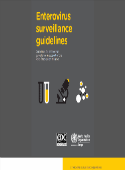Enterovirus surveillance guidelines. Guidelines for enterovirus surveillance in support of the Polio Eradication Initiative (2015)

Download
2015, vi + 46 pages
ISBN 978 92 890 5081 4
This publication is only available online.
The strategy for achieving polio eradication and maintaining polio-free status until global certification of eradication is complete has two major components: establishing high population immunity to polioviruses through immunization, and detecting and rapidly responding to poliovirus cases through high-sensitivity surveillance. While surveillance for acute flaccid paralysis is considered the "gold standard" for countries that were endemic or recently endemic for poliovirus, other surveillance strategies and data have been accepted from countries with a long history of non-endemicity, high levels of sanitation and strong health systems. This includes combinations of: surveillance for "poliomyelitis cases" and cases of vaccine-associated paralytic poliomyelitis, environmental surveillance for polioviruses and/or enterovirus surveillance.
These guidelines, devised by the WHO Regional Office for Europe and the United States Centers for Disease Control and Prevention (CDC), provide national decision-makers and their technical advisors with information on the principles and practices of adopting enterovirus surveillance to support the Polio Eradication Initiative. The guidelines will help them decide if an enterovirus surveillance system could be established, or existing systems modified, that would meet both disease-control and programmatic requirements.



